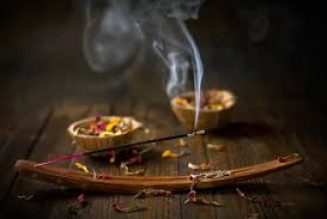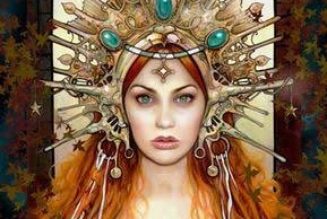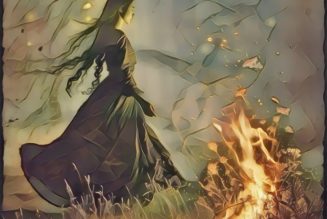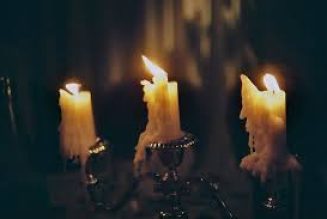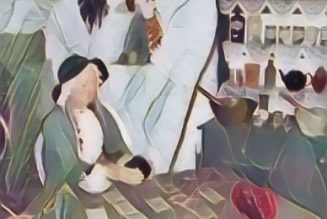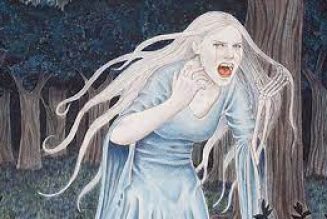
Today fairies are not just for little girls’ imagination, they’re for witches and magical practitioners too. There’s a magical trend – working with the unseen world, namely working with the fae. There are many historical and folkloric connections between fairies and witches dating back centuries. Let’s learn about this connection, as well as where and how the first witch made friends with fairies.
Morgan Le Fay: The “First” Fairy Witch
Ever heard of King Arthur and the Knights of the Round Table? Within the legends of Camelot are stories of a powerful and feared fairy witch. Her name is Morgan Le Fay, and in some versions of the Arthurian legend, she is King Arthur’s sister. The last two words of her name Le Fay literally means the fairy. Morgan Le Fay lived in Avalon and had abilities, and so was accused of being a fairy and witch.
Morgan Le Fay and the Isle of Avalon
Different versions of the Arthurian legend paint her in different lights. She was either the ruin or the savior of Arthur’s life. Legend says she took Arthur to the Isle of Avalon, to be his last resting place. Moreover, the Isle of Avalon was a magical place beyond the mist and inhabited by fairies. Nine magical sisters lived there, including Morgan Le Fay.
The Fairy Witch Trials
We have all heard of the unspeakable horrors that took place with the Witch Trials in Europe and America. Superstition and greed drove the massacres to occur. But what most people don’t know is fairies played a part in the Witch Trials too.
The Fairy Witch Trial of the Fisherwife of Palermo
Most of the Fairy Witch Trials took place in Italy. Out of the known sixty-five cases, the Fisherwife of Palermo’s fairy witch trial in Sicily was most well-known. The wife of a fisherman claimed she could leave her body behind and party with the elves whenever she wanted. She explained the King and Queen of Elves promised her riches and other pleasures if she denounced all other gods. She signed a contract and, on many occasions, spiritually joined the elves in feasting and revelry. The fairy faith was strong, and most believed the Fisherwife to be associating with fairies and not the Devil. So inevitably, they released her. Her accusers agreed she was merely “having dreams” of fairies and not physically copulating with “devils”.
Isobel Gowdie & the Queen of Elfame
In a witch trial in Scotland, an accused witch claimed she’d met with the Queen of Fairies (the Queen of Elfame) under the hills. Isobel Gowdie said the fairies taught her and other women how to fly on beanstalks to meet with other witches. Isobel’s confession is the most detailed account from this time period. And can be researched in its entirety online. I also recommend reading Emma Wilby’s book “The Visions of Isobel Gowdie.”
The Nature of the Fairies
Fairies were such an integral part of folklore in Europe that most people didn’t associate fairies with the Christian devil for many years. Often, as in the case of the Fisherwife of Palermo, the Church allowed the accused to go free. The Church explained these women’s experiences with fairies as simply dreams or mental illness. However, if fairies were mentioned in alignment with the Devil or familiars, or if the accused was thought to have harmed another using witchcraft, they were tried/tortured/executed.
The Irish and House Elves
As an elderly woman in Ireland you couldn’t keep your house too clean. Otherwise people would be suspicious of a bean-tighe in your home. A bean-tighe (pronounced ban-tee) was a female fairy similar to the Scottish brownie who tended house and watched over the children. They accused old women of witchcraft, particularly with fairies involved.
Cunningfolk and Fairy Friends
In opposition to witches who practiced maleficium, there were others who practiced “white” magic. The local cunningman or cunningwoman healed, counteracted curses, helped find lost objects and performed other helpful magical tasks. Many of the cunningfolk received their otherworldly knowledge from the fairies.
Biddy Early
An Irish woman by the name of Biddy Early was a cunningwoman who lived in the late 1700’s through the 1800’s. Biddy was called upon to not only heal people but to find lost items, to cure sick animals, and to aid in crop abundance. Biddy was well known for her herbal knowledge and for clairvoyance. Some said Biddy Early was given powers by the fairies, and that she carried a “fairy bottle” that told whispered the fairies’ secrets to her.
Modern Fairy Witches
The cunningfolk and witches of the past are gone but not forgotten. They live on in a new wave of witches and magical practitioners reviving the old ways. Some fairy witches practice fairy witchcraft by basing their magic and beliefs on fairy lore. Others follow a more religious form of fairy witchcraft.
The Feri Tradition
The Feri Tradition was created by Victor Anderson. This form of witchcraft is based on sensuality and can be very intense in nature. From my research it’s not focused on the actual belief or working with fairies, but more on an ecstatic experience within oneself. There are also various fairy Wiccan traditions that tie Celtic fairy beliefs into ritual and practice.
The REAL Connection Between Fairies and Witches
The real reason there’s a connection between fairies and witches is simple – nature. An undying, passionate love for nature and the preservation thereof. Witches walk the path of witchcraft because they seek to commune with the Universe starting with Mother Earth. Fairies are the spirits of nature, so naturally when witches work with nature, they are working with fairies. When nature spirits, fairies, realize a witch is a witch who cares and is in sync with Mother Earth, they will begin teaching that witch their secrets. Is it no wonder witches were closely linked with fairies during the Witch Trials? It makes sense to me.
